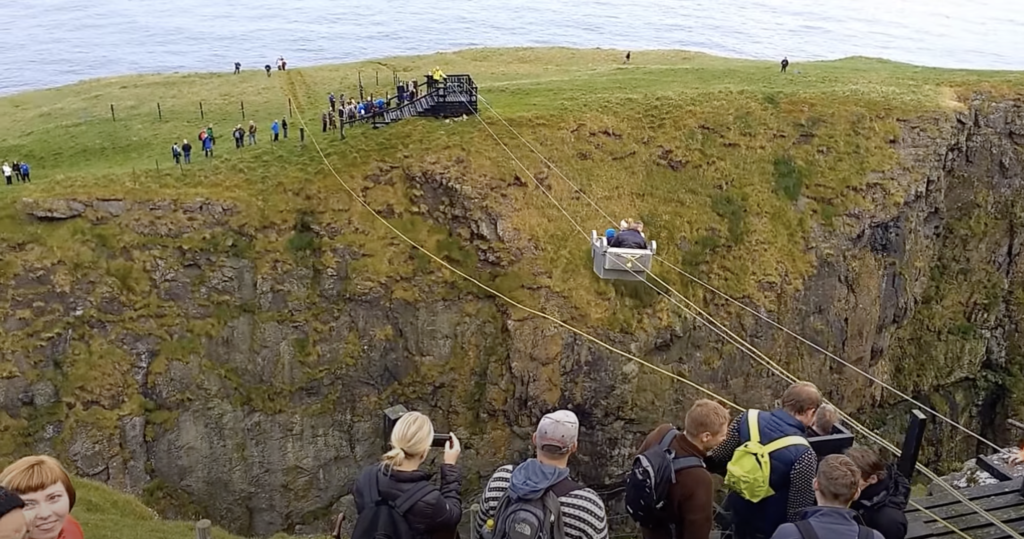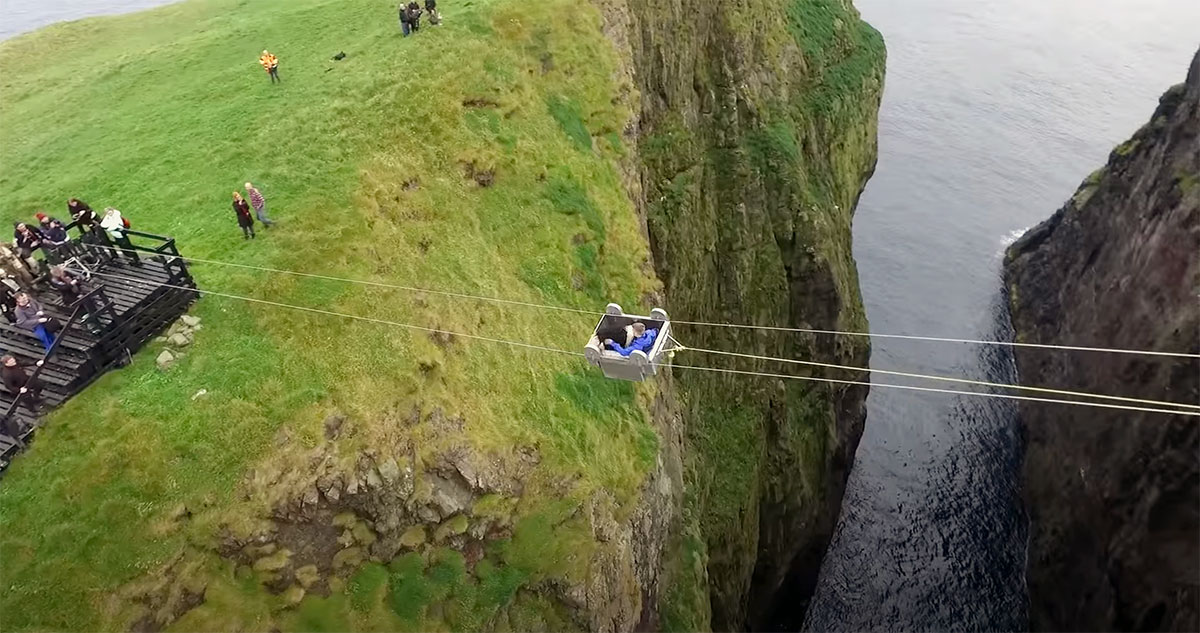Despite the difficult terrain and challenges of traversing the rough seas, people in the Faroe Islands have made their homes on all but one of their eighteen islands. Not included in that count are the numerous islets, sea stacks, and separated cliffs; landforms distinct enough to garner their own names and identities but treacherous enough to resist inhabitation — by people anyway. Because of their isolation these remote areas can be perfect grazing grounds for the plentiful population of sheep.
Land rights are complicated in the Faroe Islands, where usage of “outfield” is often determined by ownership of property within a village. I got a glimpse of this complexity in the movie 1700 Meters from the Future, but learned about the history in much detail by reading the paper “Land Divisions, Land Rights, and Landownership in the Faeroe Islands” by Arne Thorsteinsson. You can find it within the collected volume Nordic Landscapes: Region and Belonging on the Northern Edge of Europe. The author describes how isolated regions in the Faroe Islands usually belong collectively to an entire settlement:
“On more or less inaccessible areas of grass in the mountains, on islets and stacks, and in other remote outlying areas are the pastures known as feitilendi. In general, these have natural boundaries that the sheep were not able to cross. The right to keep sheep in such areas does not belong to the hagi where the feitilendi is found, but to the entire settlement or to particular lands in the settlement. Usually, castrated and old rams and barren ewes are place in the feitilendi for fattening up for slaughter.
“Land Divisions, Land Rights, and Landownership in the Faeroe Islands” by Arne Thorsteinsson (Nordic Landscapes, page 90)
The use of a feitilendi for grazing can lead to a kind of extreme shepherding. Sheep are transported by boat, or even helicopter. They’re chased around rocky cliffs and lifted with ropes. These dramatic feats of flock movement are a twice-a-year affair, isolating the sheep in the spring to fatten them up, and retrieving them before winter weather makes it impossible. An essay on the website Jungles in Paris, featuring wonderful photographs by Ken Bower, notes that this kind of herding is “not for the faint of heart.”


Perhaps the most dramatic example of this kind of remote grazing can be found on the sea stack known as Stakkurin. Standing proudly on the northernmost edge Streymoy, the stack belongs to the nearby village of Tjørnuvík and is accessible only via a hand-pulled aerial cable car.


Every September, the gathering of the sheep becomes a public event, as villagers and visitors hike to the stack and cross via the aerial cable car. Farmers corral the sheep and shuttle them across, before herding them back to the village. The cable car is manually powered, with groups of people pulling ropes on pulleys to bring passengers (and sheep) across the expanse.
The photographer Saviour Mifsud thoroughly documented the 2020 event on his website and I highly recommend browsing his photos there. He also posted videos on his Instagram Stories.
Below are a couple of videos that capture the scene well. The first is a short aerial view and the second is a longer capture that includes the hike to Stakkurin.
And a final video, if you can stomach the potential vertigo, captures the experience from inside the cable car itself. The men in this video are loading sheep into the cars, and transporting them to the stack. This point-of-view provides a much better look at the mechanics of the ropes and pulleys, as well the slightly stunned sheep emerging onto their new home for the summer.
